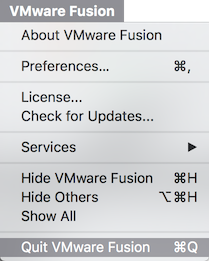Fortigate Vm Trial License Reset Firefox

The PAYG option includes a 30 day free trial. For more information about license options and trials, see Firebox Cloud License Options. You can license Firebox.
Full documentation access Threat Response documentation portal is accessible to Threat Response customers only. If you are accessing this page directly through the link, all the other content will be protected. To access all available documentation, please, perform the following steps: 1. Log in to Threat Response 2. At the top bar click on the? You will be seamlessly redirected to the portal with full documentation access Threat Response requirements Virtual machine requirements Threat Response is a stand-alone virtual appliance. It is distributed as an OVA file, and can be downloaded from the Proofpoint Customer Portal.
Lan audio monitor cracked. Simple solution: Dual Boot with XP (XP ran MUCH MUCH faster in my tests, and with no glitches) Best of luck! // FIXME: replace midiOutShortMsg with a general function that can // output arbitrary midi data (including sysex) So the developer has written a note saying that midiOutShortMsg needs to be changed. I've had a look at the source code (available on the website) and found this in the midiIO file. Ok so as mentioned, there is an issue with sending midi clock (sync) data with EthernetMidi.
The virtual machine requires the following, minimum hardware configuration for production deployments: • 4x vCPU Cores (8x vCPU cores recommended) • 8 GB RAM (16 GB RAM recommended) • 20 GB HDD (base system) • 500 GB HDD (local databases and backups) • 1 network adaptor (default E1000) For administration and general usage, Threat Response will need one IP address allocated to it for network access. If you plan to build a cluster for high-availability, you will need one local IP per-system, plus a single management IP to be shared between the systems. Service accounts Threat Response interfaces with other systems to receive alerts, perform user lookups, and update systems as part of its response capabilities. It is recommended, but not required, to use a service account for these interactions. Below is a list of systems and services that you may want to create a service account for.
• Event Sources (any detection systems where an API account is used) • Enforcement Devices (firewalls and proxies) • LDAP / Active Directory • Read-only permissions required for user lookups • Domain Admin permissions required for response behaviors (optional). Note For a trial run, any administrative-level account with read / write permissions will suffice in most cases. Required ports for network communication Threat Response requires the following ports to be opened for management purposes, and to allow it to communicate with your devices. Refer to the table below for a list of ports that should be allowed between Threat Response and other systems. Note For detailed instructions on how to install and operate domain controller agent, please, refer to the following section. Supported browsers Threat Response supports the following browsers: Browser Version Google Chrome 51.0 + Mozilla Firefox 47.0 + Supported hypervisors Today Threat Response supports the following virtualization environments: • Building Threat Response VM Importing Threat Response to VMware This example shows how to configure the Proofpoint Threat Response on VMware ESX 5.5.
Note This example assumes you have downloaded the OVA file from the Proofpoint Customer Portal as described in your Proofpoint Welcome letter. To install Threat Response in a VMware environment: • Start the VMware vSphere Client on your workstation.
• Log in to the VMware ESXi server that will host the VM. • Select File > Deploy OVF Template to open the Deploy OVF Template dialog box.
Note: the installation steps are listed in the panel on the left. You can use this list to follow your progress. • Go to the Deploy from file field and browse to the Threat Response OVA file. • Click Open, then click Next.
• Verify the OVF Template details then click Next. • Review the Threat Response End User License Agreement. • Click Accept, then click Next. • Accept or change the default name in the Name and Location field, then click Next. • Select the resource pool for this VM, then click Next.
• Select the data store to use for the Threat Response files, then click Next. • Map the networks in the OVF template to your networks, then click Next. Note: The managed devices must be reachable from the Threat Response virtual appliance.
• Review the settings and click Finish to begin installing Threat Response. Note: The system takes a few minutes to import the virtual appliance.